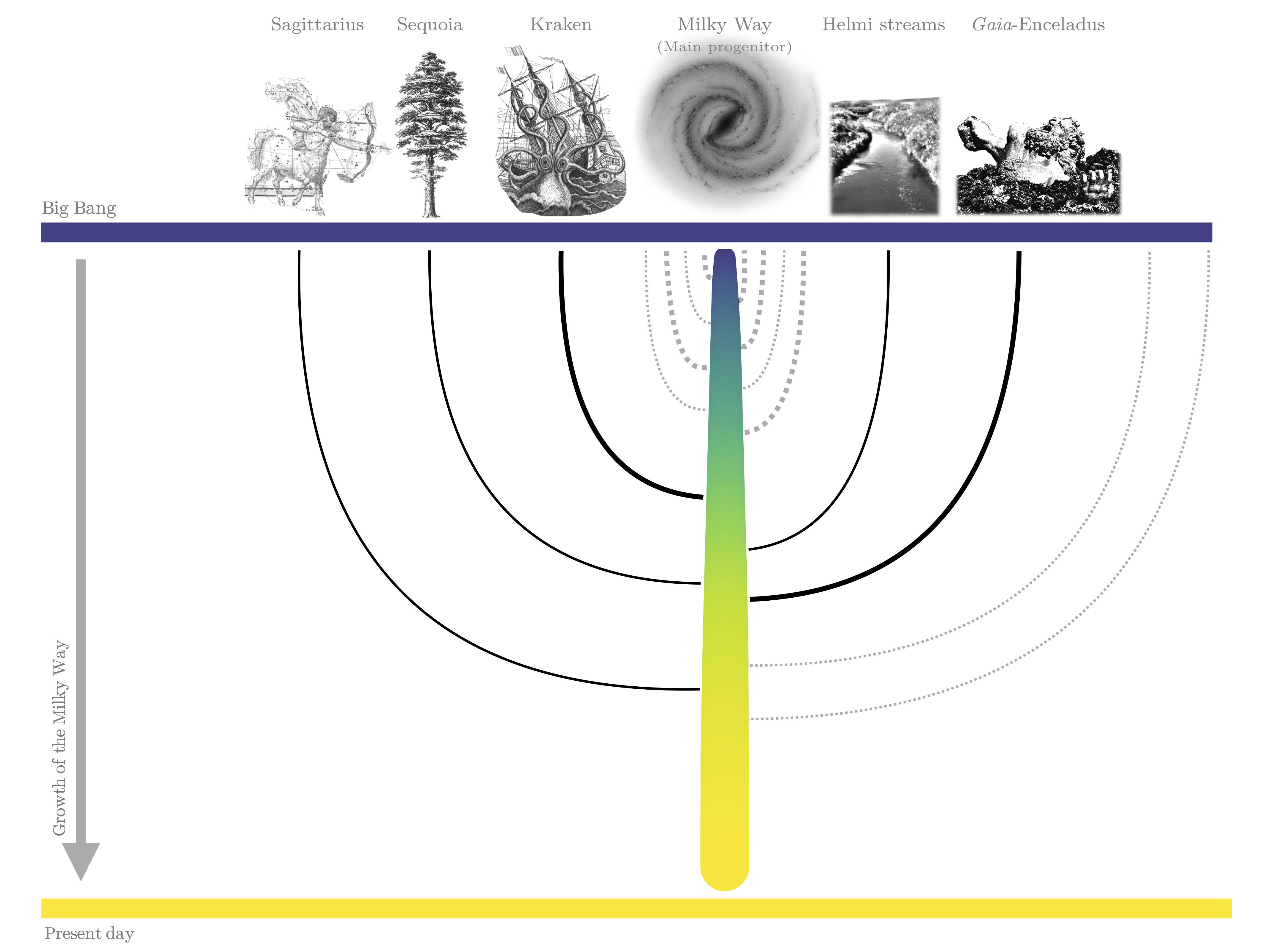Newfound 'Kraken merger' may have been the biggest collision in Milky Way's history
Our galaxy was built on collisions — and this one may be the largest ever.

The Milky Way contains more than 100 billion stars, but it didn't come by them all honestly. At least a dozen times over the last 12 billion years, the Milky Way collided with a neighboring galaxy and devoured it, swallowing up that neighbor's stars and mixing them into an ever-growing stew of pilfered suns.
With each galactic merger, the shape, size and motion of our galaxy changed forever, ultimately becoming the iconic spiral we recognize today. Now, in a recent study published in the October 2020 issue of the journal Monthly Notices of the Royal Astronomical Society, researchers have attempted to unwind that spiral. Using artificial intelligence (AI) to match distinct clusters of stars by their ages, motions and chemical compositions, the team found evidence of five large-scale galactic mergers (each involving 100 million stars or more) dating back more than 10 billion years — including one ancient collision that has never been described before.
Related: 11 Fascinating facts about our Milky Way galaxy
This newfound crash with the so-called Kraken galaxy not only helps fill in the Milky Way's mysterious family tree, but could also help astronomers piece together what our galaxy looked like in its earliest days, the study authors said.
"The collision with Kraken must have been the most significant merger the Milky Way ever experienced," lead study author Diederik Kruijssen, an astronomer at the University of Heidelberg in Germany, said in a statement. "The merger with Kraken took place 11 billion years ago, when the Milky Way was four times less massive [than today]. As a result, the collision must have truly transformed what the Milky Way looked like at the time."
In their new study, Kruijssen and his colleagues used computer simulations to analyze all the known globular clusters — old, dense spheres of up to 1 million stars that all formed around the same time as each other — within the Milky Way. Our galaxy hosts at least 150 of these clusters, which astronomers believe are "fossils" of the ancient galaxies that the Milky Way gobbled up over its long and hungry history.
The researchers trained an AI algorithm to identify globular clusters based on the shared properties of stars, at first running the algorithm on thousands of simulated galaxies. Once the algorithm was able to accurately predict the formation, evolution and destruction of globular clusters in those imaginary galaxies, the team set their AI loose on the Milky Way.
Sign up for the Live Science daily newsletter now
Get the world’s most fascinating discoveries delivered straight to your inbox.

Using data obtained by the Gaia space probe (which has given us the most complete map of the Milky Way), the algorithm analyzed the ages, movements and chemical compositions of known globular clusters in our galaxy in order to recreate the cosmic mergers that landed them there. The team's analysis accurately predicted four known mergers in the Milky Way's past — including the so-called Gaia sausage merger, which added several billion stars to our galaxy's bulge about 9 billion years ago — as well as the previously unknown Kraken merger.
And that merger was a beast. According to the team's results, the Kraken may have been the largest and oldest galactic collision in the Milky Way's history. The merger occurred when the Milky Way was only a fraction of its current size, and may have added to our galaxy 13 globular clusters that are still identifiable today. While the Gaia sausage merger ultimately added more solar mass to the Milky Way (more than 20 globular clusters' worth) than did the Kraken one, our galaxy was considerably bigger when the sausage merger happened and was likely less susceptible to major structural changes, the researchers wrote.
This newfound merger is only one small piece of the puzzle. Because the road to galaxy formation is strewn with collisions like these, it's likely that many more small-scale mergers also contributed to the Milky Way we know today. Astronomers suspect that at least 15 other mergers may be lurking in our galaxy's past that each involved 10 million stars or more, and their remnants are just waiting to be found in our galaxy's globular guts.
"The debris of more than five progenitor galaxies has now been identified," Kruijssen said. "With current and upcoming telescopes, it should be possible to find [evidence of] them all."
Astronomers have about 3 or 4 billion years to figure it out. Following that, another galaxy-altering merger will occur, when the neighboring Andromeda galaxy (currently 2.5 million light-years away) and the Milky Way will inevitably collide. Isn’t that always the way: Just when you think you know a galaxy, it goes and changes on you again.
Originally published on Live Science.

Brandon is the space/physics editor at Live Science. His writing has appeared in The Washington Post, Reader's Digest, CBS.com, the Richard Dawkins Foundation website and other outlets. He holds a bachelor's degree in creative writing from the University of Arizona, with minors in journalism and media arts. He enjoys writing most about space, geoscience and the mysteries of the universe.









